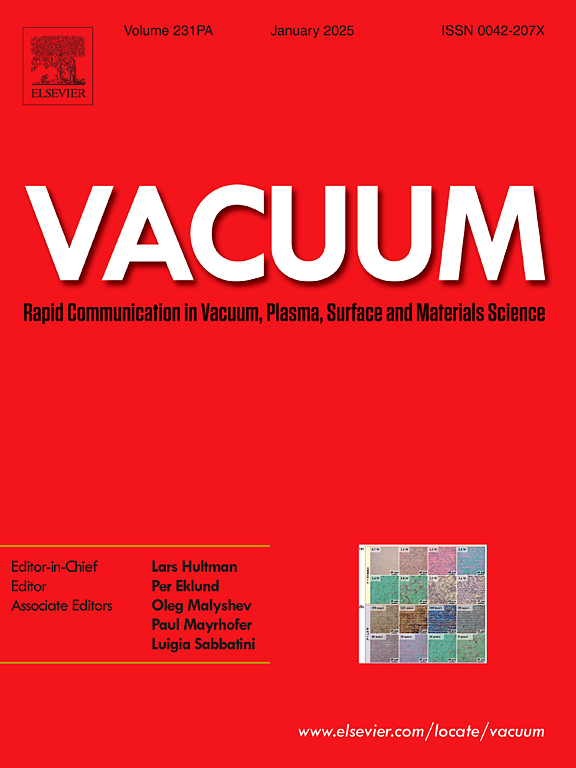316H不锈钢表面Cr2N保护涂层在含溶解氧的液态钠中的相容性
IF 3.8
2区 材料科学
Q2 MATERIALS SCIENCE, MULTIDISCIPLINARY
引用次数: 0
摘要
液态金属腐蚀是钠冷快堆(SFR)必须考虑的关键因素之一,它是一个物理或物理化学过程,涉及到物质的溶解和转移、化学反应和新相的形成。采用包渗铬和气体氮化法制备了SFRs中最重要的结构材料316H不锈钢的Cr2N涂层,并在含氧200 ppm的液态钠中浸泡470℃。钠和溶解氧直接与氮化层接触并向氮化层内扩散,而与钠相容的Cr向外扩散,形成由Na2O/Na2O2、Cr2N和氧化铬/氮化氧组成的na影响垢,减缓了钠的腐蚀。Na暴露诱导了Cr2N涂层的两个主要微观结构变化,包括表面氧化层的形成,其力学性能低于固有涂层,以及晶粒尺寸的减小。钠对Cr2N涂层微观结构的影响非常有限,涂层在液体钠中几乎没有降解,保持化学惰性和结构完整,证明了与液体钠的高度相容性。本文章由计算机程序翻译,如有差异,请以英文原文为准。
Compatibility of Cr2N protective coatings on 316H stainless steel in liquid sodium containing dissolved oxygen
Liquid metal corrosion is one of the key factors that have to be considered in Sodium-Cooled Fast Reactor (SFR), which is a physical or physical–chemical process, involving species dissolution and transport, chemical reactions and new phase formation. Cr2N coatings were prepared on 316H stainless steel, one of the most important structural materials used in SFRs, via pack chromizing and gas nitriding, and immersed in liquid sodium containing 200 ppm of oxygen at 470 °C. Sodium and dissolved oxygen were contact with the nitride layer directly and diffused toward into it of nanoscale, while Cr, which is compatible with sodium, diffused outward to form a Na-affected scale composed of Na2O/Na2O2, Cr2N and chromium oxides/oxynitrides that slow down the corrosion of sodium. Na exposure induced two main microstructural changes in Cr2N coatings, including the formation of a surface oxide scale with lower mechanical properties than the intrinsic coating, and a reduced grain size. Sodium had a very limited influence on the Cr2N coatings microstructure, the coatings showed little degradation in liquid sodium and remained chemically inert and structurally intact, proving to be highly compatible with liquid sodium.
求助全文
通过发布文献求助,成功后即可免费获取论文全文。
去求助
来源期刊

Vacuum
工程技术-材料科学:综合
CiteScore
6.80
自引率
17.50%
发文量
0
审稿时长
34 days
期刊介绍:
Vacuum is an international rapid publications journal with a focus on short communication. All papers are peer-reviewed, with the review process for short communication geared towards very fast turnaround times. The journal also published full research papers, thematic issues and selected papers from leading conferences.
A report in Vacuum should represent a major advance in an area that involves a controlled environment at pressures of one atmosphere or below.
The scope of the journal includes:
1. Vacuum; original developments in vacuum pumping and instrumentation, vacuum measurement, vacuum gas dynamics, gas-surface interactions, surface treatment for UHV applications and low outgassing, vacuum melting, sintering, and vacuum metrology. Technology and solutions for large-scale facilities (e.g., particle accelerators and fusion devices). New instrumentation ( e.g., detectors and electron microscopes).
2. Plasma science; advances in PVD, CVD, plasma-assisted CVD, ion sources, deposition processes and analysis.
3. Surface science; surface engineering, surface chemistry, surface analysis, crystal growth, ion-surface interactions and etching, nanometer-scale processing, surface modification.
4. Materials science; novel functional or structural materials. Metals, ceramics, and polymers. Experiments, simulations, and modelling for understanding structure-property relationships. Thin films and coatings. Nanostructures and ion implantation.
 求助内容:
求助内容: 应助结果提醒方式:
应助结果提醒方式:


